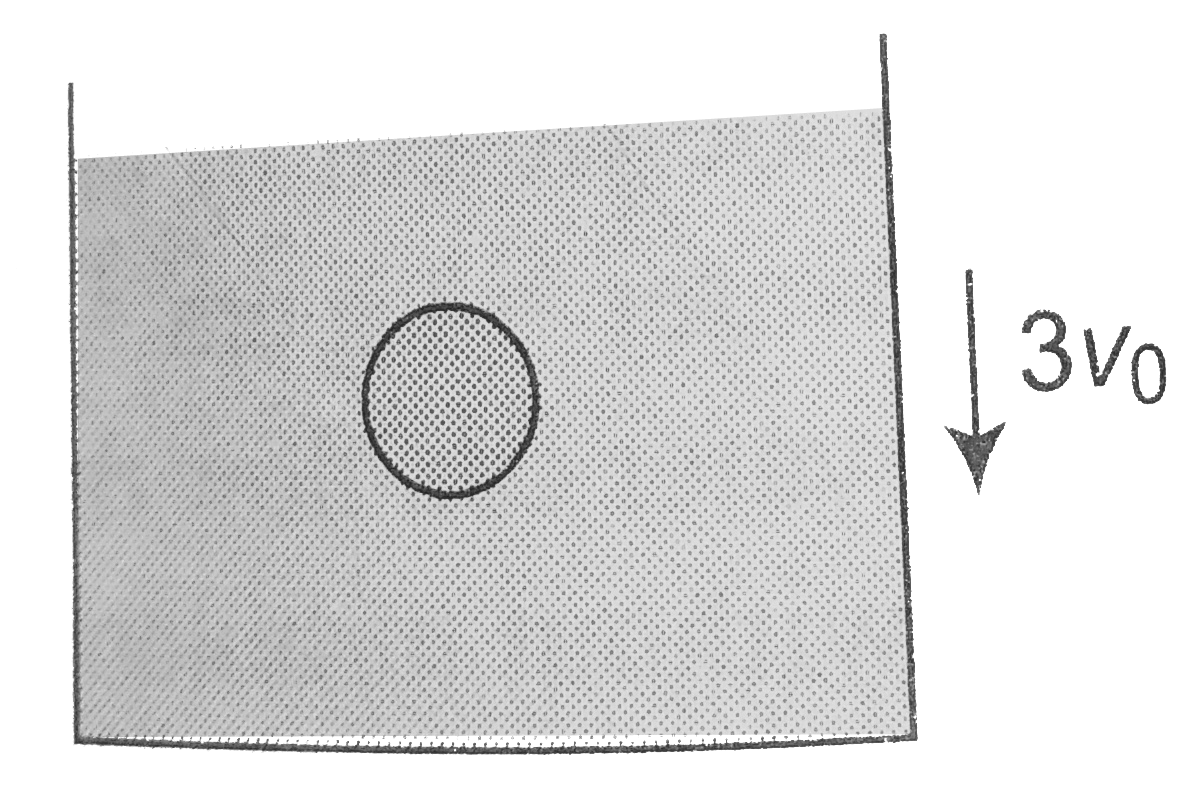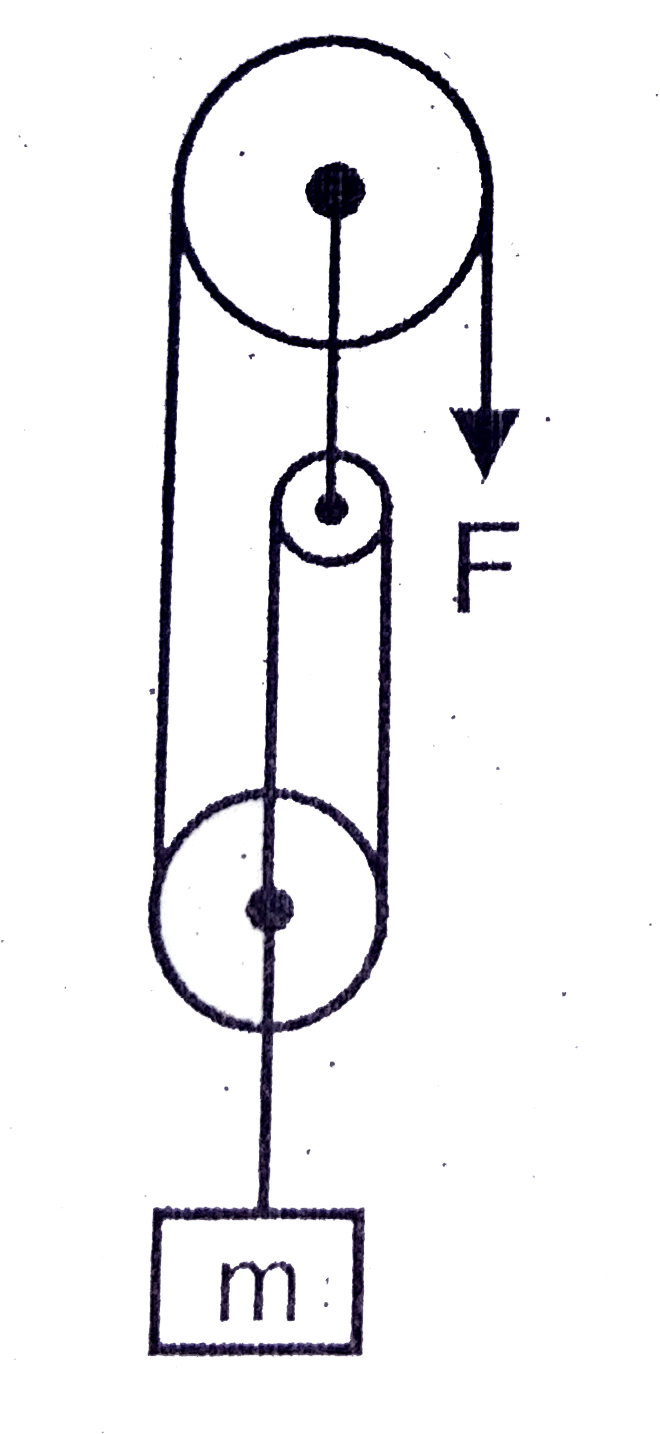The force F on a sphere of radius r moving in a medium with velocity v is given by F=6πηrv. The dimensions of η are
[ML−3]
[MLT−2]
[MT−1]
[ML−1T−1]
The correct Answer is:D
To find the dimensions of the viscosity coefficient η from the equation F=6πηrv, we will follow these steps:
Step 1: Rearrange the equation
We start with the given equation:
F=6πηrv
We can rearrange this to solve for η:
η=F6πrv
Step 2: Identify the dimensions of each variable
Next, we need to determine the dimensions of the variables involved:
- The dimension of force F is given by:
(F)=MLT−2
- The dimension of radius r is:
(r)=L
- The dimension of velocity v is:
(v)=LT−1
Step 3: Substitute the dimensions into the equation
Now we substitute the dimensions into the equation for η:
(η)=(F)(r)(v)=MLT−2L⋅(LT−1)
Step 4: Simplify the expression
Now we simplify the expression:
(η)=MLT−2L2T−1=MLT−2L2⋅T=ML−1T−1
Step 5: Final result
Thus, the dimensions of η are:
(η)=ML−1T−1
Conclusion
The dimensions of the viscosity coefficient η are ML−1T−1.
---
We start with the given equation:
F=6πηrv
We can rearrange this to solve for η:
η=F6πrv
Next, we need to determine the dimensions of the variables involved:
- The dimension of force F is given by:
(F)=MLT−2
- The dimension of radius r is:
(r)=L
- The dimension of velocity v is:
(v)=LT−1
Now we substitute the dimensions into the equation for η:
(η)=(F)(r)(v)=MLT−2L⋅(LT−1)
Now we simplify the expression:
(η)=MLT−2L2T−1=MLT−2L2⋅T=ML−1T−1
Thus, the dimensions of η are:
(η)=ML−1T−1
The dimensions of the viscosity coefficient η are ML−1T−1.
Similar Questions
A force F is given by F = at+bt2 , where t is time. The dimensions of a and b are
View SolutionThe viscous drug on a sphere of medis, moving through a fluid with velocity can be expressed as6πη where η is the coefficient of viscosity of the fluid. A small sphere of radius a and density σ is released from the bottom of a column of liqaid of density ρ. If ρ ger than σ describe the motion of the sphere. Deduce an expression for
(i) initial acceleration of the sphere and
(ii) its terminal velocityView Solution
Knowledge Check
- Question 1 - Select One
A force F is given by F=at+bt2 , where t is time . What are the dimensions of aandb?
A[MLT−3]and[MLT−4]B[MLT−4]and[MLT−3]C[MLT−1]and[MLT−2]D[MLT−2]and[MLT0]
If force F is applied on a body and it moves with a velocity v, the power will be
View SolutionWhen an object moves through a fluid, as when a ball falls through air or a glass sphere falls through water te fluid exerts a viscous foce F on the object this force tends to slow the object for a small sphere of radius r moving is given by stoke's law, Fw=6πηrv. in this formula η in the coefficient of viscosity of the fluid which is the proportionality constant that determines how much tangential force is required to move a fluid layer at a constant speed v, when the layer has an area A and is located a perpendicular distance z from and immobile surface. the magnitude of the force is given by F=ηAv/z. For a viscous fluid to move from location 2 to location 1 along 2 must exceed that at location 1, poiseuilles's law given the volumes flow rate Q that results from such a pressure difference P2−P1. The flow rate of expressed by the formula Q=πR4(P2−P1)8ηL poiseuille's law remains valid as long as the fluid flow is laminar. For a sfficiently high speed however the flow becomes turbulent flow is laminar as long as the reynolds number is less than approximately 2000. This number is given by the formula Re=2¯vρRη In which ¯v is the average speed ρ is the density η is the coefficient of viscosity of the fluid and R is the radius of the pipe. Take the density of water to be ρ=1000kg/m3
Q. What is the viscous force on a glass sphere of radius r=1mm falling through water (η=1×10−3Pa−s) when the sphere has speed of 3m/s?View SolutionWhen an object moves through a fluid, as when a ball falls through air or a glass sphere falls through water te fluid exerts a viscous foce F on the object this force tends to slow the object for a small sphere of radius r moving is given by stoke's law, Fw=6πηrv. in this formula η in the coefficient of viscosity of the fluid which is the proportionality constant that determines how much tangential force is required to move a fluid layer at a constant speed v, when the layer has an area A and is located a perpendicular distance z from and immobile surface. the magnitude of the force is given by F=ηAv/z. For a viscous fluid to move from location 2 to location 1 along 2 must exceed that at location 1, poiseuilles's law given the volumes flow rate Q that results from such a pressure difference P2−P1. The flow rate of expressed by the formula Q=πR4(P2−P1)8ηL poiseuille's law remains valid as long as the fluid flow is laminar. For a sfficiently high speed however the flow becomes turbulent flow is laminar as long as the reynolds number is less than approximately 2000. This number is given by the formula Re=2¯vρRη In which ¯v is the average speed ρ is the density η is the coefficient of viscosity of the fluid and R is the radius of the pipe. Take the density of water to be ρ=1000kg/m3
Q. If the sphere in previous question has mass of 1×10−5kg what is its terminal velocity when falling through water? (η=1×10−3Pa−s)
A. 1.3m/s
B. 3.4m/s
C. 5.2m/s
D. 6.5m/sView SolutionA force F is given by F=at+bt2 , where t is time . What are the dimensions of aandb?
View Solution
A container filled with viscous liquid is moving vertically downwards with constant speed 3v0. At the instant shown, a sphere of radius r is moving vertically downwards (in liquid) has speed v0. The coefficient of viscosity is η. There is no relative motion between the liquid and the container. Then at the shoen instant, The magnitude of viscous force acting on sphere isView SolutionIn the block moves up with constant velocity v m/s. Find F
 View Solution
View SolutionIf I is moment of inertia, F is force, v is velocity, E is energy and L is length then, dimension of (IFv2EL4) will be:
View Solution

